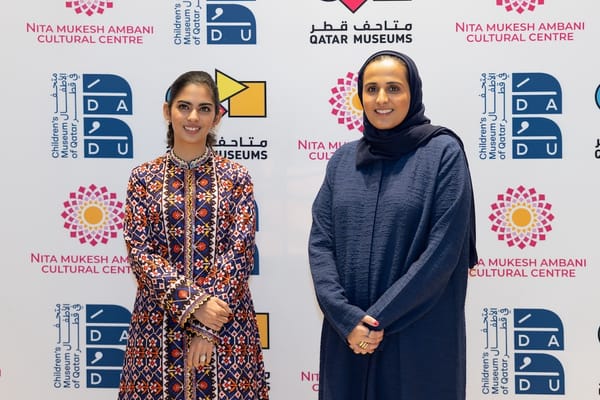What is Art History?
Art history is the academic discipline that explores the development and interpretation of visual arts within historical, cultural, and social contexts, offering insights into human creativity and the evolution of artistic expression across time and cultures.

Art history is the academic discipline that studies the development, history, and interpretation of visual arts. It encompasses various forms of art, including painting, sculpture, architecture, and decorative arts, and examines them within their historical, social, cultural, and political contexts. This field of study goes beyond the mere appreciation of art's aesthetic qualities; it involves an analytical approach to understanding how and why art is created, its impact on society, and its significance over time. This essay delves into the scope of art history, its methodologies, and its relevance in contemporary society.
Scope of Art History
Art history covers a vast array of topics and periods, from prehistoric cave paintings to contemporary digital art. It is divided into several chronological and thematic categories, each focusing on different aspects of art and its evolution.

Prehistoric and Ancient Art
The study of prehistoric and ancient art involves examining artefacts and artworks from early human civilizations. This includes cave paintings, such as those found in Lascaux, France, and the monumental architecture of ancient civilizations like the pyramids of Egypt and the ziggurats of Mesopotamia. These early works provide insights into the lives, beliefs, and cultures of ancient peoples.
Classical Art
Classical art history focuses on the art of ancient Greece and Rome. This period is renowned for its advancements in sculpture, architecture, and pottery. The classical ideals of beauty, proportion, and harmony have had a lasting influence on Western art. Key works from this period include the Parthenon in Athens and the sculptures of Phidias.
Medieval Art
The medieval period encompasses a broad range of styles and regions, including Byzantine, Romanesque, and Gothic art. This era is characterized by religious themes and the use of symbolic imagery. Important examples include the mosaics of Ravenna, the illuminated manuscripts of the Book of Kells, and the Gothic cathedrals of Chartres and Notre-Dame.
Renaissance Art
The Renaissance marks a period of rebirth in art, culture, and intellect, inspired by the classical past. This era, spanning the 14th to the 17th centuries, saw significant advancements in techniques such as perspective, anatomy, and chiaroscuro. Prominent artists like Leonardo da Vinci, Michelangelo, and Raphael exemplify the achievements of this period. The Renaissance also saw the emergence of art as a profession and the establishment of art academies.
Baroque and Rococo
The Baroque period, spanning the late 16th to the early 18th centuries, is characterized by dramatic expression, movement, and grandeur. Artists like Caravaggio, Bernini, and Rembrandt created works that evoke intense emotion and dynamism. The Rococo style that followed is noted for its lightness, elegance, and playful themes, as seen in the works of Fragonard and Boucher.
Modern and Contemporary Art
Modern art refers to the artistic movements from the late 19th century to the mid-20th century, including Impressionism, Expressionism, Cubism, and Surrealism. Artists like Monet, Van Gogh, Picasso, and Dali challenged traditional notions of art, experimenting with new techniques and perspectives. Contemporary art, encompassing the latter half of the 20th century to the present, includes diverse practices such as abstract expressionism, pop art, minimalism, and digital art. Artists like Warhol, Pollock, and Hirst reflect the broad range of styles and mediums in contemporary art.
Methodologies in Art History
Art historians employ a variety of methodologies to study and interpret art. These approaches can be broadly categorized into formal analysis, iconography, contextual analysis, and theoretical frameworks.

Formal Analysis
Formal analysis involves examining the visual elements of an artwork, such as composition, colour, line, texture, and space. This method focuses on the aesthetic and technical aspects of the work, analyzing how these elements contribute to its overall effect. Formal analysis can reveal the artist's techniques, style, and intentions.
Iconography
Iconography is the study of symbols, themes, and motifs in art. This method involves identifying and interpreting the subject matter of an artwork, often drawing on historical, literary, and religious texts to uncover its meaning. Iconography is particularly useful in understanding works with complex allegorical or religious content.
Contextual Analysis
Contextual analysis examines an artwork within its historical, cultural, social, and political contexts. This approach considers the circumstances surrounding the creation and reception of the work, including the artist's background, patronage, audience, and the broader socio-political environment. Contextual analysis provides insights into the factors that influenced the artwork and its significance at the time.
Theoretical Frameworks
Art historians also apply various theoretical frameworks to interpret art. These include Marxism, feminism, psychoanalysis, post-colonialism, and structuralism, among others. These theories offer different perspectives on the role of art in society, the power dynamics involved in its production and reception, and the ways in which art can both reflect and challenge cultural norms.
The Relevance of Art History
Art history is a vital field that contributes to our understanding of human culture and creativity. Its relevance extends beyond the academic realm, impacting education, cultural heritage, and contemporary society.

Education
Studying art history fosters critical thinking, visual literacy, and an appreciation for cultural diversity. It encourages students to analyze and interpret visual information, develop research skills, and engage with different historical and cultural perspectives. Art history also promotes an understanding of the interconnectedness of art, history, and society.
Cultural Heritage
Art history plays a crucial role in preserving and interpreting cultural heritage. Museums, galleries, and cultural institutions rely on art historians to curate collections, conduct research, and educate the public. Art historical scholarship informs conservation practices, ensuring that artworks are preserved for future generations. It also contributes to the identification and repatriation of cultural artefacts.
Contemporary Society
In contemporary society, art history provides a lens through which to understand current artistic practices and cultural trends. It offers insights into how contemporary artists engage with historical traditions and address modern issues such as identity, politics, and technology. Art history also informs public policy and cultural diplomacy, highlighting the importance of cultural exchange and understanding.
Challenges and Future Directions
While art history is a well-established discipline, it faces several challenges and opportunities for growth.

Inclusivity and Diversity
One of the significant challenges in art history is addressing issues of inclusivity and diversity. Traditionally, the field has focused on Western art, often overlooking the contributions of artists from other cultures and marginalized groups. There is a growing recognition of the need to diversify the canon and include a broader range of perspectives. This involves expanding the study of non-Western art, contemporary art practices, and underrepresented artists.
Digital Technologies
Advancements in digital technologies are transforming the practice of art history. Digital tools and resources enable new forms of research, analysis, and dissemination. High-resolution imaging, 3D modelling, and digital archives provide unprecedented access to artworks and historical documents. Online platforms and virtual exhibitions expand the reach of art historical scholarship, making it more accessible to a global audience.
Interdisciplinary Approaches
Art history increasingly intersects with other disciplines, such as anthropology, archaeology, literature, and cultural studies. Interdisciplinary approaches enrich the study of art by incorporating diverse methodologies and perspectives. Collaboration with scientists and technologists also enhances conservation efforts and the understanding of materials and techniques.
Conclusion
Art history is a dynamic and multifaceted field that explores the richness of human creativity and cultural expression. Through its study of visual arts, it offers valuable insights into the history, society, and values of different cultures. Art historians employ a range of methodologies to analyze and interpret artworks, considering their aesthetic, symbolic, and contextual dimensions. The relevance of art history extends beyond academia, impacting education, cultural heritage, and contemporary society. As the field evolves, it faces the challenges of inclusivity, digital transformation, and interdisciplinary collaboration. Despite these challenges, art history remains a vital discipline that enhances our understanding of the world and our place within it.





